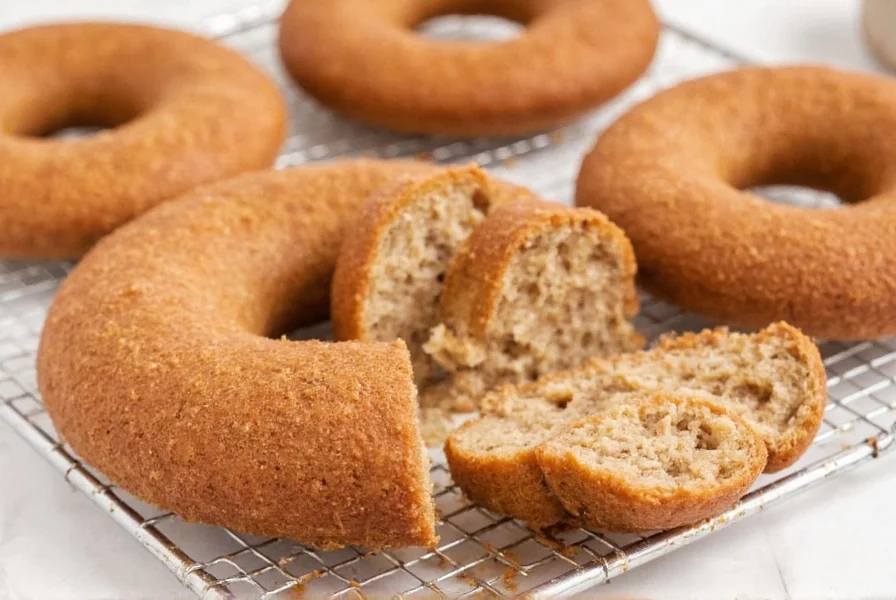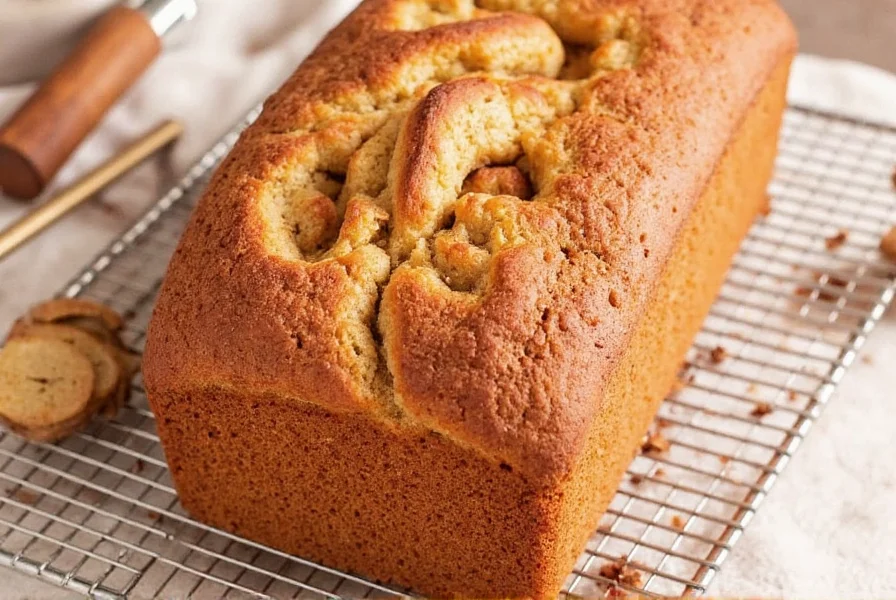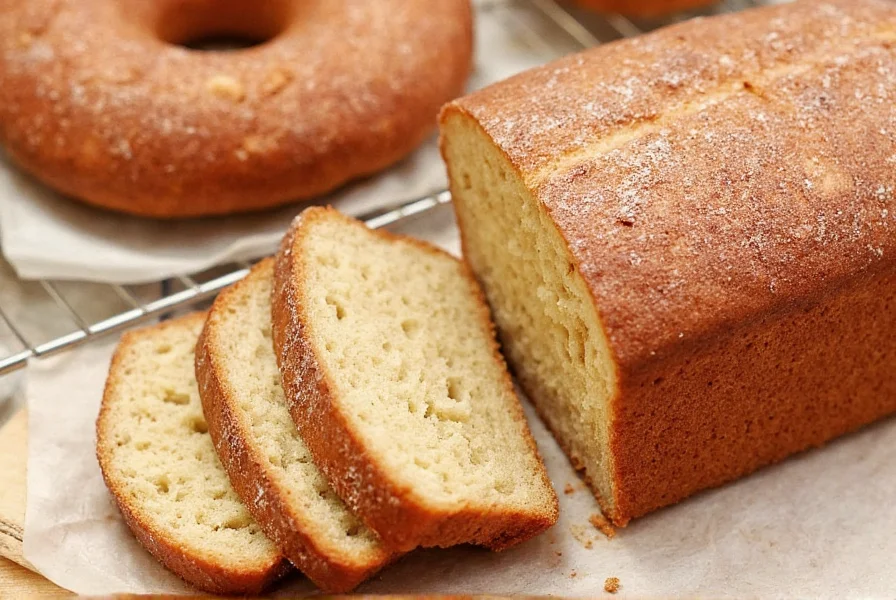Cinnamon donut bread delivers the comforting flavors of your favorite breakfast pastry in convenient loaf form. This innovative hybrid satisfies cravings for both sweet breads and fried donuts while eliminating the mess of deep frying. The magic happens through careful balancing of leavening agents, sugar ratios, and baking temperatures to achieve that signature donut-like texture without actual frying.
What Makes Cinnamon Donut Bread Different From Regular Bread
Traditional bread relies on yeast fermentation for its structure and flavor development, requiring multiple rises. Cinnamon donut bread typically uses chemical leaveners (baking powder/soda) for immediate rise, creating a cake-like crumb similar to muffins or quick breads. The higher sugar content (usually 1.5-2x regular bread recipes) caramelizes during baking, forming that distinctive donut-like crust.
Unlike cinnamon roll bread which maintains distinct spiral layers, donut bread incorporates the cinnamon sugar throughout the batter or as a marbled pattern. This creates uniform spice distribution rather than concentrated swirls. The fat content also differs significantly - donut bread recipes often include more butter or oil to mimic the richness of fried donuts.
Key Ingredients for Perfect Cinnamon Donut Bread
The foundation of exceptional cinnamon donut bread starts with precise ingredient ratios. All-purpose flour provides structure without excessive chewiness, while cake flour can create an even more tender crumb. Buttermilk adds tang and reacts with baking soda for optimal rise, though regular milk with vinegar works as substitute.
| Ingredient | Function | Critical Ratio |
|---|---|---|
| All-purpose flour | Structure foundation | 2 cups per standard loaf |
| Granulated sugar | Sweetness & crust formation | 1 cup (minimum) |
| Brown sugar | Moisture & caramel notes | 1/2 cup |
| Cinnamon | Primary flavor | 2-3 tsp (not powder) |
| Baking powder | Primary leavener | 1.5-2 tsp |
Professional bakers emphasize using real cinnamon (Ceylon or Saigon varieties) rather than pre-mixed cinnamon sugar, which often contains excessive cornstarch. The ideal cinnamon to sugar ratio ranges from 1:8 to 1:12 - enough for noticeable spice without bitterness. Many home recipes fail by using too much cinnamon, creating an overpowering medicinal flavor.

Step-by-Step Baking Process
Begin by preparing your cinnamon sugar mixture separately - 1 cup sugar combined with 2-3 teaspoons of ground cinnamon. For enhanced flavor, toast the cinnamon in a dry pan for 30 seconds before mixing. The batter should come together quickly to prevent gluten development; overmixing creates toughness.
When layering the batter in your loaf pan, alternate between plain batter and cinnamon sugar. Create pockets of spice by sprinkling 1-2 tablespoons of the mixture between layers rather than mixing it throughout. This technique prevents the cinnamon from sinking to the bottom while ensuring even distribution.
Bake at 350°F (175°C) for 45-55 minutes until a toothpick inserted comes out clean. The critical finishing step happens immediately after baking: while the loaf is still warm (but not hot), brush with melted butter and generously coat with additional cinnamon sugar. This creates the signature crisp, sweet crust that defines authentic donut bread.
Troubleshooting Common Issues
Dense texture: Usually caused by overmixing the batter or expired leavening agents. Always sift dry ingredients and test baking powder/soda freshness before starting. The batter should resemble thick pancake mix - some lumps are acceptable.
Burnt exterior: Oven temperatures often run hotter than indicated. Use an oven thermometer and consider reducing temperature by 25°F after the first 30 minutes of baking. Aluminum pans conduct heat more aggressively than glass or ceramic.
Cinnamon sinking: Toss the cinnamon sugar mixture with 1 tablespoon of flour before sprinkling into the batter. This helps it stay suspended during baking rather than settling at the bottom.

Variations for Dietary Needs
Gluten-free versions work well with 1:1 gluten-free flour blends containing xanthan gum. Add 1/4 teaspoon extra baking powder to compensate for heavier flours. For dairy-free, substitute buttermilk with almond milk plus 1 tablespoon vinegar.
Reduced-sugar adaptations maintain texture by replacing only 25-30% of granulated sugar with monk fruit sweetener. Never eliminate all sugar - it's crucial for both flavor and texture development in this hybrid recipe. The cinnamon ratio should increase slightly (by 25%) when reducing sugar to maintain flavor balance.
Storage and Serving Recommendations
Cinnamon donut bread tastes best within 24 hours of baking when the crust maintains its crisp texture. Store at room temperature in an airtight container with parchment between slices. Avoid refrigeration, which accelerates staling. For longer storage, freeze individual slices wrapped in plastic and place in freezer bags.
Revive day-old bread by toasting slices lightly in a toaster oven. The dry heat restores some crispness to the crust while warming the interior. Never microwave, as this creates a gummy texture. Pair with strong coffee or vanilla ice cream for an exceptional dessert experience.
Frequently Asked Questions
Can I make cinnamon donut bread without eggs?
Yes, use a commercial egg replacer or substitute each egg with 1/4 cup unsweetened applesauce plus 1 teaspoon baking powder. The texture will be slightly denser but still acceptable. Avoid omitting eggs entirely as they provide crucial structure in this egg-dependent recipe.
Why is my cinnamon donut bread dry?
Dryness typically results from overbaking or incorrect flour measurement. Use the spoon-and-level method for flour (never scoop directly from the bag). Check for doneness at 40 minutes - the bread continues cooking from residual heat after removal from the oven. Adding 2 tablespoons sour cream can boost moisture without altering texture.
Can I use yeast instead of baking powder?
Traditional yeast won't work well in standard cinnamon donut bread recipes. The high sugar content inhibits yeast activity, and the chemical leavening creates the characteristic cake-like texture. For a yeast version, you'd need a completely different recipe resembling babka or cinnamon roll bread, which requires dough rising and produces a chewier texture.
How do I prevent the cinnamon from burning?
Use Saigon cinnamon which has lower burning point than Cassia varieties. Reduce oven temperature by 25°F after the first 30 minutes of baking. Create cinnamon pockets rather than mixing it throughout the batter, and avoid excessive amounts - more than 3 teaspoons per loaf increases burning risk.











 浙公网安备
33010002000092号
浙公网安备
33010002000092号 浙B2-20120091-4
浙B2-20120091-4